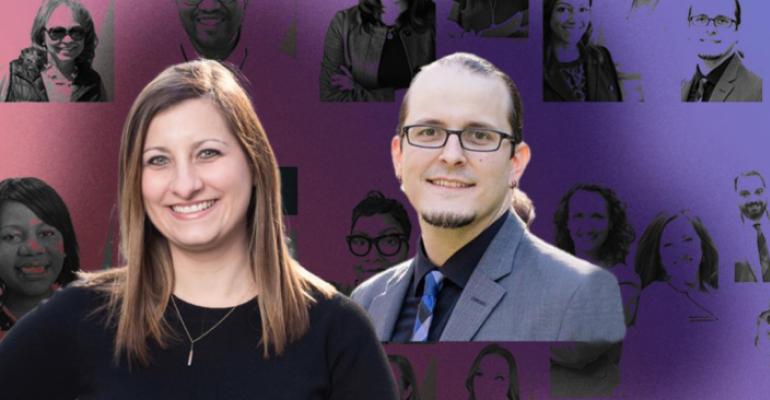MeetingsNet’s 2021 Changemakers list recognizes outstanding meeting professionals for their efforts to move their organizations and the industry forward in unique and positive ways. Find the full 2021 Changemakers list here.
Melissa Klingler
Vice President,
Educational Program Development
Adam Saunders
Senior Director,
Live Meeting Multimedia
PeerView Institute for Medical Education
For quickly and successfully developing SOPs for preparing academic faculty and clinicians to deliver virtual CME
In March 2020, education specialist Melissa Klingler and technology specialist Adam Saunders at PeerView Institute for Medical Education realized they had to be change leaders, partnering more closely than ever to make sure the company’s clients—hospitals, institutions, and medical societies—would convert their in-person CME events scheduled throughout 2020 to the virtual medium.
Their concerns were similar to those echoing across the meetings industry at the time: How to deliver compelling programming without being able to get presenting faculty members, a production crew, and the audience into the same room. “For my team, the challenge was trying to anticipate what could go wrong in a new environment” of remote presentations being done by non-professional presenters, says Klingler. What’s more, “we didn’t know if our clients or the physician attendees would even want to engage online.”
To manage the 2020 volume that came their way—106 live virtual symposia, 125 events combining live and prerecorded programming, and 170 on-demand educational sessions—Klingler and Saunders started by completely rewriting their standard operating procedures.
To create content that would be effective, Klingler and Saunders designed a new approach to working with presenters that maintained quality while reducing development time and costs. First, presenters were surveyed about their online-delivery proficiency and their equipment needs. Saunders then developed media-production kits to ship to faculty that included virtual-platform instructions as well as microphones and lighting. “We had to get a lot of people who had presented in person for years with very basic technology to figure out this new stuff,” Saunders says. “So, we led them step by step—I labeled all the connectors in each kit and then had a Zoom call where I’d say things like, ‘Plug number one into number two and place that piece to the left of your screen.’ We did that until each presenter was comfortable and had a good practice run in front of the camera.” In 2020, more than 200 coaching sessions took place with presenters.
Early on, “Adam and I had so many conversations about how to create a framework for communicating clearly to clients, presenters, and attendees, and also among our internal team,” Klingler notes. “We had to really focus on setting up all the processes properly. If we hadn’t done that right in the beginning, it would have been impossible.”
Managing Change
Klingler: “First, we’ve always operated under the assumption that with live events, whatever can go wrong will go wrong. If you go into the virtual medium with that same mindset, it will keep you very adaptable and accepting of change. Second, don’t feel like you always need to provide the answer. Within project management and meeting planning, you’re often seen as the person who will have the solution. But you should collaborate and get other perspectives from within the team and outside the team before you decide on how to change.”
Saunders: “You must believe in what you’re doing but show patience as you’re getting people to do it.”





